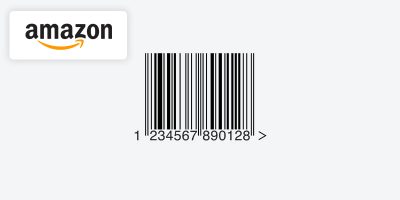
If you’re unfamiliar with them, the differences between GTIN vs UPC vs ASIN vs ISBN can be difficult to determine, and instead, read like an indistinguishable mess of acronyms. If this is the case for you, read on to put your confusion to rest.
GTIN stands for Global Tracking ID Number or Global Trade Item Number. This is a family of data structures. The number that is encoded into a barcode is the GTIN. The type of barcode can be UPC or EAN or ISBN. Learn about the difference between UPC and EAN below.
- The GTIN-12 is used in the United States and Canada and is encoded into a 12-digit UPC (Universal Product Code) Barcodes.
- The GTIN-13 is used outside of the United States and Canada and is encoded as an EAN-13.
- ISBN – The International Standard Book Number (ISBN) is a unique commercial book identifier barcode. Each ISBN code identifies uniquely a book. ISBN have either 10 or 13 digits. All ISBN assigned after January 1st 2007 have 13 digits. Typically, the ISBN is printed on the back cover of the book.
ASINs – Amazon Standard Identification Numbers (ASINs) lookup tools are unique blocks of 10 letters and/or numbers that identify items on Amazon. For books, the Amazon ASIN is the same as the ISBN number, but for all other products a new ASIN is created when the item is uploaded to Amazon’s catalog. The same product sold by different sellers will share an ASIN and a product detail page.
If you’re wondering how to get an ASIN number for Amazon, you’ll need to know your products’ GTINs, or Global Trade Item Numbers. The most common GTINs used are UPCs, ISBNs, and EANs. These types of codes are generally found near the barcode on the product package of your product. You can search on Amazon for a GTIN and then look at the product detail page to see its corresponding ASIN. Amazon uses these universal product identifiers (GTINs) to create and match their own unique ASIN codes.
GTIN and UPC codes are becoming attributes that more and more marketplaces and price comparison channels are requiring as data feed fields.
Why? The answer is simple, rather than create a new listing on a marketplace like Target+ or Walmart, UPC codes allow a marketplace to recognize that multiple merchants are selling the exact same product and group listings together for ease of discovery by shoppers.
Feedonomics can help send the correct GTIN and UPC fields to all of your marketing channels and marketplaces. Learn more here.

Brian Roizen is the Cofounder and Chief Architect of Feedonomics, a full-service feed optimization platform that optimizes product data for hundreds of channels. He has been featured on numerous podcasts and eCommerce webinars, and regularly contributes to Search Engine Land and other industry-leading blogs. Brian graduated summa cum laude from UCLA with both a Bachelor’s and Master’s degree in Mechanical Engineering.



